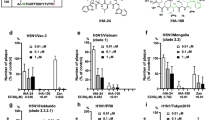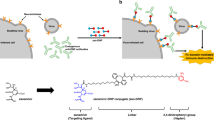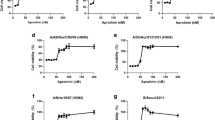Abstract
The pandemic influenza 2009 (A(H1N1)pdm09) virus currently causes seasonal and annual epidemic outbreaks. The widespread use of anti-influenza drugs such as neuraminidase and matrix protein 2 (M2) channel inhibitors has resulted in the emergence of drug-resistant influenza viruses. In this study, we aimed to determine the anti-influenza A(H1N1)pdm09 virus activity of azithromycin, a re-positioned macrolide antibiotic with potential as a new anti-influenza candidate, and to elucidate its underlying mechanisms of action. We performed in vitro and in vivo studies to address this. Our in vitro approaches indicated that progeny virus replication was remarkably inhibited by treating viruses with azithromycin before infection; however, azithromycin administration after infection did not affect this process. We next investigated the steps inhibited by azithromycin during virus invasion. Azithromycin did not affect attachment of viruses onto the cell surface, but blocked internalization into host cells during the early phase of infection. We further demonstrated that azithromycin targeted newly budded progeny virus from the host cells and inactivated their endocytic activity. This unique inhibitory mechanism has not been observed for other anti-influenza drugs, indicating the potential activity of azithromycin before and after influenza virus infection. Considering these in vitro observations, we administered azithromycin intranasally to mice infected with A(H1N1)pdm09 virus. Single intranasal azithromycin treatment successfully reduced viral load in the lungs and relieved hypothermia, which was induced by infection. Our findings indicate the possibility that azithromycin could be an effective macrolide for the treatment of human influenza.
Similar content being viewed by others
Log in or create a free account to read this content
Gain free access to this article, as well as selected content from this journal and more on nature.com
or
References
Glezen WP, Taber LH, Frank AL, Gruber WC, Piedra PA. Influenza virus infections in infants. Pediatr Infect Dis J. 1997;16:1065–8.
Tumpey TM. et al. Characterization of the reconstructed 1918 Spanish influenza pandemic virus. Science. 2005;310:77–80.
Tran TH. et al. Avian influenza A (H5N1) in 10 patients in Vietnam. N Engl J Med. 2004;350:1179–88.
World Health Organization. Weekly update pandemic (H1N1) 2009. 6 August 2010. https://www.who.int/csr/don/2010_08_06/en/.
Mauad T. et al. Lung pathology in fatal novel human influenza A (H1N1) infection. Am J Respir Cit Care Med. 2009;181:72–9.
Takeda S. Extracorporeal membrane oxygenation for 2009 influenza A (H1N1) severe respiratory failure in Japan. J Anesth. 2012;26:650–7.
Hayden FG. et al. Efficacy and safety of the neuraminidase inhibitor zanamivir in the treatment of influenza virus infections. GG167 Influenza Study Group. N Engl J Med. 1997;337:874–80.
Yamashita M. Laninamivir and its prodrug, CS-8958: long-acting neuraminidase inhibitors for the treatment of influenza. Antivir Chem Chemother. 2010;21:71–84.
Stephenson I. et al. Neuraminidase inhibitor resistance after oseltamivir treatment of acute influenza A and B in children. Clin Infect Dis. 2009;48:389–96.
Hurt AC, Holien JK, Parker M, Kelso A, Barr IG. Zanamivir-resistant influenza viruses with a novel neuraminidase mutation. J Virol. 2009;83:10366–73.
Leang SK. et al. Peramivir and laninamivir susceptibility of circulating influenza A and B viruses. Influenza Other Respir Virus. 2014;8:135–9.
Furuta Y, Komeno T, Nakamura T. Favipiravir (T-705), a broad-spectrum inhibitor of viral RNA polymerase. Proc Jpn Acad Ser B. 2017;93:449–63.
Kimberly ENg. Xofluza (Baloxavir Marboxil) for the treatment of acute uncomplicated influenza. P T Community. 2019;44:9–11.
Takashita E. et al. Detection of influenza A (H3N2) viruses exhibiting reduced susceptibility to the novel cap-dependent endonuclease inhibitor baloxavir in Japan, December 2018. Eur Surveill. 2019;24:1800698
Tsurita M. et al. Early augmentation of interleukin (IL)-12 level in the airway of mice administrated orally with clarithromycin or intranasally with IL-12 results in alleviation of influenza infection. J Pharm Exp Ther. 2001;298:362–8.
Yamaya M. et al. Clarithromycin inhibits type A seasonal influenza virus infection in human airway epithelial cells. J Pharm Exp Ther. 2010;333:81–90.
Sugamata R. et al. Leucomycin A3, a 16-membered macrolide antibiotic, inhibits influenza A virus infection and disease progression. J Antibiot. 2014;67:213–22.
Skehel JJ, Wiley DC. Receptor binding and membrane fusion in virus entry: the influenza hemagglutinin. Annu Rev Biochem. 2000;69:531–69.
Palese P, Shaw ML. Orthomyxoviridae: the viruses and their replication. In: Knipe DM, Howley PM, editors. Fields virology. 5th ed. Philadelphia: Lippincott Williams & Wilkins; 2007. p. 1647–89.
Yeganeh B. et al. Suppression of influenza A virus replication in human lung epithelial cells by noncytotoxic concentrations bafilomycin A1. Am J Physiol Lung Cell Mol Physiol. 2015;300:L270–86.
Le Roy C, Wrana JL. Clathrin- and non- clathrin-mediated endocytosis regulation of cell signaling. Nat Rev Mol Cell Biol. 2005;6:112–26.
Qin J. et al. Real-time dissection of dynamic uncoating of individual influenza viruses. Proc Natl Acad Sci USA. 2019;116:2577–82.
Londrigan SL. et al. N-linked glycosylation facilitates sialic acid-independent attachment and entry of influenza A viruses into cells expressing DC-SIGN or L-SIGN. J Virol. 2011;85:2990–3000.
Fage C, Pizzorno A, Rheaume C, Abed Y, Boivin G. The combination of oseltamivir with azithromycin does not show additional benefits over oseltamivir monotherapy in mice infected with influenza A(H1N1)pdm2009 virus. J Med Virol. 2017;89:2239–43.
Matsuzaki Y. et al. A two-year survey of the oseltamivir-resistant influenza A(H1N1) virus in Yamagata, Japan and the clinical effectiveness of oseltamivir and zanamivir. Virol J. 2010;7:53
Dong G. et al. Adamatane-resistant influenza A viruses in the world (1902-2013): frequency and distribution of M2 gene mutations. PloS ONE. 2015;10:e0119115
Louie J. et al. Factors associated with death or hospitalization due to pandemic 2009 influenza A(H1N1) infection in California. JAMA. 2009;302:1896–902.
Kalonji L. et al. The non-antibiotic macrolide EM900 inhibits rhinovirus infection and cytokine production in human airway epithelial cells. Physiol Rep. 2015;3:e12557
Acknowledgements
This study was supported by Japan Agency for Medical Research and Development (AMED) under Grant number: 16jm0210032h0004 and Japan Science and Technology Agency (JST). We appreciate Dr. Yosuke Kameoka at the A-CLIP institute for providing the A(H1N1)pdm09 virus strain. We would also like to thank Editage (www.editage.jp) for English language editing.
Author information
Authors and Affiliations
Corresponding author
Ethics declarations
Conflict of interest
The authors declare that they have no conflict of interest.
Additional information
Publisher’s note: Springer Nature remains neutral with regard to jurisdictional claims in published maps and institutional affiliations.
Supplementary information
Rights and permissions
About this article
Cite this article
Tran, D.H., Sugamata, R., Hirose, T. et al. Azithromycin, a 15-membered macrolide antibiotic, inhibits influenza A(H1N1)pdm09 virus infection by interfering with virus internalization process. J Antibiot 72, 759–768 (2019). https://doi.org/10.1038/s41429-019-0204-x
Received:
Revised:
Accepted:
Published:
Issue date:
DOI: https://doi.org/10.1038/s41429-019-0204-x
This article is cited by
-
Electro-polymerization of modified carbon paste sensor for detecting azithromycin
Scientific Reports (2025)
-
Winners of the 2022 JA Ōmura Awards for excellence
The Journal of Antibiotics (2024)
-
Rapid and sensitive detection of SARS-CoV-2 virus in human saliva samples using glycan based nanozyme: a clinical study
Microchimica Acta (2024)
-
Unnatural activities and mechanistic insights of cytochrome P450 PikC gained from site-specific mutagenesis by non-canonical amino acids
Nature Communications (2023)
-
Assessment of drugs administered in the Middle East as part of the COVID-19 management protocols
Inflammopharmacology (2022)



